Website eaglehawkneck.com Width 30 m | Length 400 m | |
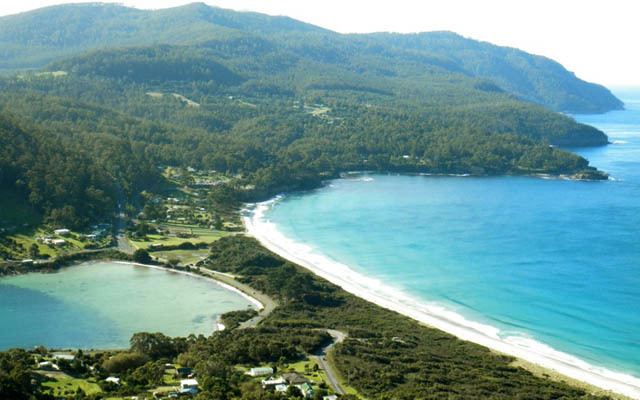 | ||
Designations Tasman National Park, World Heritage Site | ||
Bluefin tuna fishing at eaglehawk neck
The Eaglehawk Neck is a narrow isthmus that connects the Tasman Peninsula with the Forestier Peninsula, and hence to mainland Tasmania, Australia. A township settlement in the same region is also called Eaglehawk Neck.
Contents
- Bluefin tuna fishing at eaglehawk neck
- Eaglehawk neck tasmania
- Location and features
- European history
- References
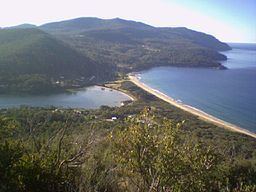
Eaglehawk neck tasmania
Location and features
At the 2011 census, the settlement of Eaglehawk Neck had a population of 338.
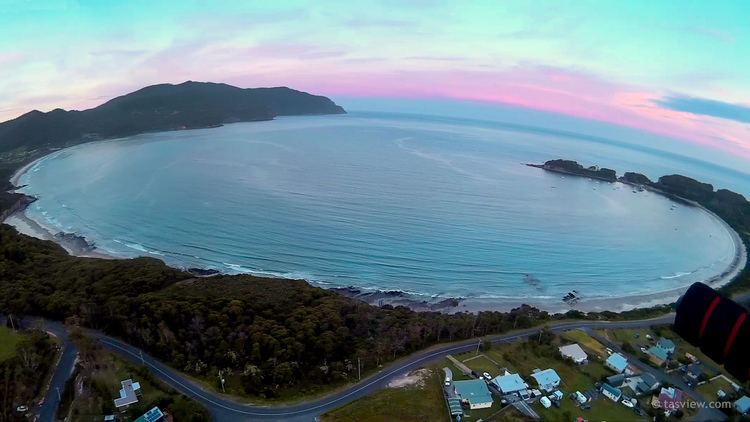
Locally known as the Neck, the isthmus itself is around 400 metres (1,300 ft) long and under 30 metres (98 ft) wide at its narrowest point. The area features rugged terrain and several unusual geological formations. These include the Tessellated Pavement, an area of flat rock that looks to be manmade but is in fact formed by erosion. Also nearby are the natural formations of Tasman's Arch, the Blowhole and the Devil's Kitchen.
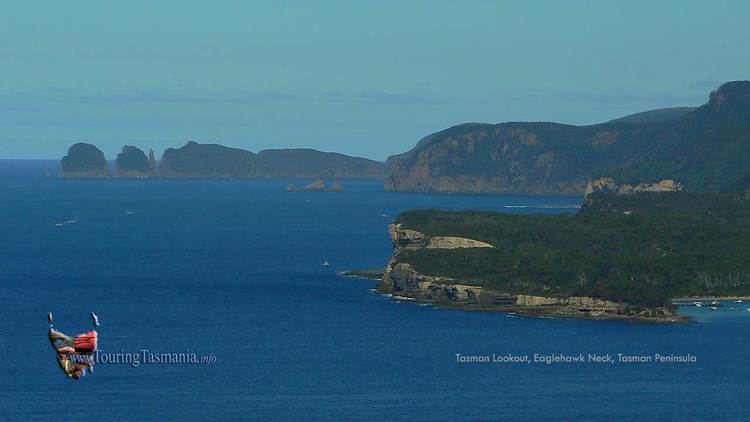
Eaglehawk Neck offers accommodation in the Lufra Hotel, near the Tessellated Pavement, and Bluegum Hostel on Old Jetty Road. A nearby footpath leads to Martin Cash's lookout near the top of the hill at the southern end.
Eaglehawk Neck is a well-known local holiday destination. On the eastern side, a beach that stretches around Pirates' Bay is a popular surfing area. In summer the population rises as people return to their holiday homes.
European history
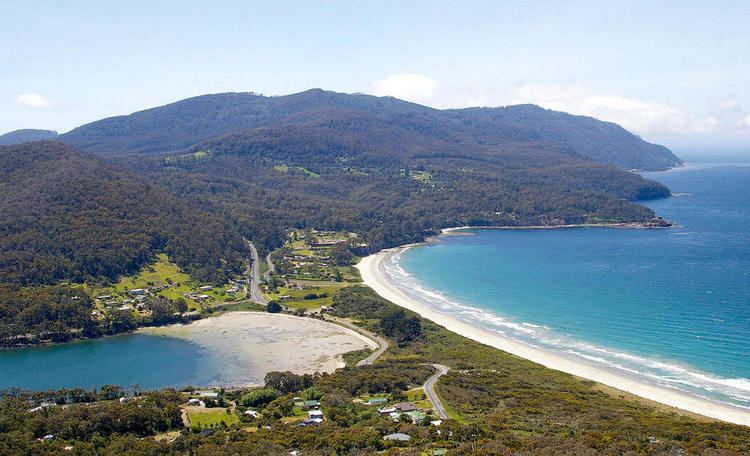
It forms a natural gateway between the peninsulas that was used by the British in 1830s when a line of dogs was chained to posts across the neck to warn of any convicts attempting to escape the Port Arthur prison. The area was heavily patrolled by soldiers, and the guards' quarters still remains as a museum. Many attempts were made by convicts to escape via Eaglehawk Neck, including those of Martin Cash. The isthmus now provides road access via the Arthur Highway to Port Arthur, part of the Australian Convict Sites, a World Heritage Site that comprises eleven remnant penal sites originally built within the British Empire during the 18th and 19th centuries on fertile Australian coastal strips. Collectively, these sites, including Port Arthur, now represent, "...the best surviving examples of large-scale penal transportation and the colonial expansion of European powers through the presence and labour of convicts."

The first Eagle Hawk Neck post office was open from 1875 until 1877. It reopened on 11 January 1895 and closed in 1974.
